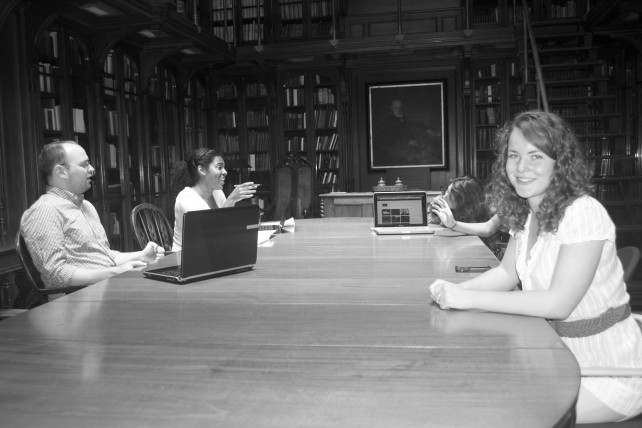Exhibit A: The Novel Index
Index,
in indexes in fiction, see
History of Peggy Black and Wilmot Bond, the (1784)
History of Sir Charles Grandison, the (1754)
Letters Writ by a Turkish Spy (1730, 1734)
Memoirs of a Certain Island 1726
Salmagundi 1814
Search the pages of the above novels and you will find that they contain an object not traditionally associated with fiction: an index. Though the presence of an index now signals a metafictional self-consciousness traditionally associated with postmodern novels, a la Pynchon and David Foster Wallace, the presence of an index.
In History of Peggy Black and Wilmot Bond includes an in the middle of volume two with an alphabetical listing various philosophers on a variety of topics, from architecture to pleasure to witchcraft (p. 220-226, v.2), as well as a full page list of foods a shepherd might eat. Eliza Haywood’s Memoirs of a certain Island offers a pointed list of characters in the novel, the pages they are introduced on, and their “real” or historical counterpart.
Though frequently occurring in the backmatter of texts, these indexes were no afterthought but were part of the the way authors branded their forays into this genre called the “novel”. Salmagundi advertises itself as “A new and improved edition, with tables of contents and a copious index” and the title page of Richardson’s Sir Charles Grandison includes the note: “To which is added, an historical and characteristical index.” Clearly the index is a selling point.
Why might this be? Indexes linked these works of fiction with other genres of scientific and taxonomic work. A glance at the publication at the history of reference texts –
Ephram Chambers Cyclopaedia (1728)
Diderots’ Encyclopedie (1751-65)
Samuel Johnson’s Dictionary (1754)
Encyclopaedia Britannica (1768-1771)
Carolus Linneaus’ System Naturae (1758)
Charles Messier’s Catalogue (1774)
illustrates the idea that idea of taxonomy and reference texts was circulating in the mid 18th century (Barachas). Janine Barachas notes that this list-making mentality agrees with some of the tenets in the rise of the “realist” novel as sketched by paradigmatic novel theorists like Ian Watt. By imitating modes of historical and scientific reference, the presence of a copious index, as in the case of Sir Charles Grandison, ”signals the literary gravitas” ( Graphic Design, 174) of the text. Where Barchas leaves off is perhaps at the most interesting aspect of the index: the difference between and index and an ordinary list in a text.
The fact that a reader, having come to an index, is instructed to read the text in an entirely different way - one that presupposes discreet categories and sections for its content. While it might have signaled prestige, the fact that it imagines a kind of discontinuous reading. This kind of index creates knowledge that is, in Robin Valenza’s words, more like “scientific knowledge.” A more apt term might be “portable knowledge.” Indexes, by design, are designed not to be read, but rather, referenced.
The index possesses a strange economy: in an almost Derridean fashion, it paradoxically aids in the navigation of the excess material of a multi-volume novel by adding supplementary material to the text in order to abridge it and, in so doing, justify the size of the original text that necessitates the abridgment. By virtue of its subject headings, the index provides a sort of oblique reading instructions and a handy compendium the kind of “useful” reading that contemporary critics like Samuel Johnson praised.
Looking closer at this compendium-like paratext reveals a fraught nature of compilation colored by ideological and political context. Letters Writ by a Turkish Spy contains two forms of index: a detailed and descriptive table of contents and “An index, interpreting some Turkish and Arabick words, which may seem obscure and unitelligible, either in these letters, or in their titles.” The headers says it all. This short index is affixed in the front matter of the first volume. The typographic difference between the stylized, neo-Old English font for the Arabic words and the modern typeface for their definition gives a clear example of how the index itself works to obscure and make unintelligible the foreign language.
What is indexed, in addition to how it is indexed, is also key. Haywood limits the index of the Female Specatator to character names, while Richardson, though writing a “historical and characteristical index,” extend his to situations and types and he includes moral sentiments and general themes, such as “Beauty” or “Artful Men”, in a separately-published Collection of moral sentiments to his three novels – Pamela, Clarissa, and The History of Sir Charles Grandison.
These are merely a selection of the 28 novels thus far catalogued that include indexes. For the 21st century novel scholar, these pieces of paratext offer another way of imagining how understanding 18th century texts documented themselves and the world of the “real” in a way documented and described and also referenced and pointed and how they might have been consumed.
